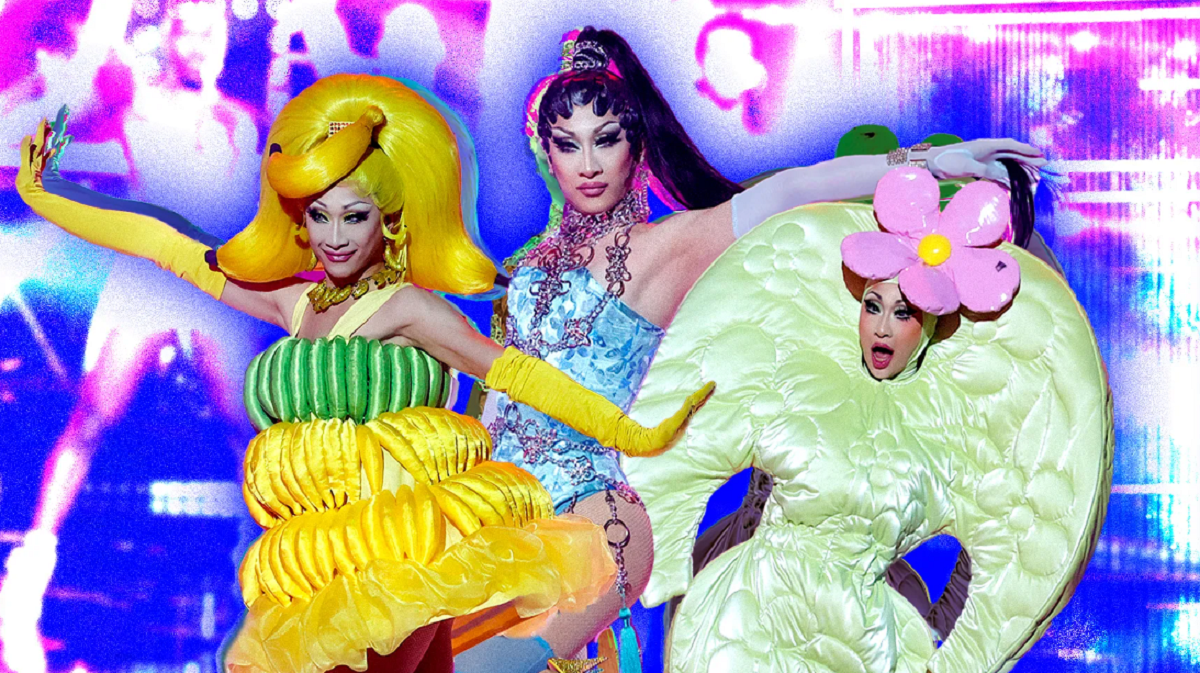“Asians are in!”
That’s how Nymphia Wind replied when AsAmNews asked what it’s like to make history as the first East Asian person to win RuPaul’s Drag Race.
“It means a lot to be able to represent a community that is so underrepresented,” Nymphia said.
The 28-year-old drag performer and fashion designer, also known off-stage as Leo Tsao, was born in the United States but moved to Taiwan at the age of six. In April, she was named winner of Season 16 of RuPaul’s Drag Race.
Throughout the show, Nymphia donned numerous costumes, often made by herself, that are infused with elements of her Taiwanese identity.
“So the way I would incorporate that is really combining the garments and fashion of traditional like temple culture, and ways of life in Taiwan,” said Nymphia. “For instance, your local tea lady auntie, night market. It’s really incorporating life and culture of Taiwan into my drag that I really love to do.”
Xem bài viết này trên Instagram
During her first appearance, she strutted onto the runway in a bright yellow outfit surrounded by sewed bananas. Yellow and bananas have become her trademark, with fans around the world endearingly calling her “Banana Buddha.”
Showing the diversity in the experiences of being Asian is important for Nymphia who is proud to represent Taiwan on the show, especially for audiences who may only be familiar with the Asian American experience.
Last month, the drag queen performed at Taiwan’s presidential office for the outgoing president Tsai Ing-wen. Dressed as the aquatic yellow water lily now endangered in Taiwan, Nymphia gave a performance and thanked Tsai for her contributions to the LGBTQ+ community.
According to the Washington Post, Nymphia began cross-dressing in high school under the influence of K-pop girl groups and later explored drag while studying fashion design in London. She first performed drag at a 2018 competition in Taipei, and has since broadened the reach of the art form there.
However, Nymphia confessed to AsAmNews that she was not always proud of her Asian identity growing up.
“Growing up, I would always ask my mom, why did you not find a non-Asian person to make a baby with? I always did struggle with self-esteem or trying to be confident and feel beautiful about my Asian identity,” said Nymphia. “Well, I am still struggling with that, to be honest.”
Nymphia talked openly about mental health on the show and, last month, she released a new book chapter on the Trevor Project to advocate for more conversations around AAPI mental health.
Research from the Trevor Project shows that race and ethnicity are important to the identity of AAPI LGBTQ+ youth, and those who find support from social groups and LGBTQ-affirming spaces are less likely to experience negative mental health impacts.
“It’s bananas how closely that research mirrors my own experiences, too,” wrote Nymphia. “For me, it has really helped to form relationships with people who have similar identities and experiences, and to spend time within our communities.”
For Nymphia, drag is an outlet for her to step outside of her own identity.
“I learned to slowly appreciate myself and through drag exploring themes around traditional culture really helped me to reconnect with my roots in a way.”
